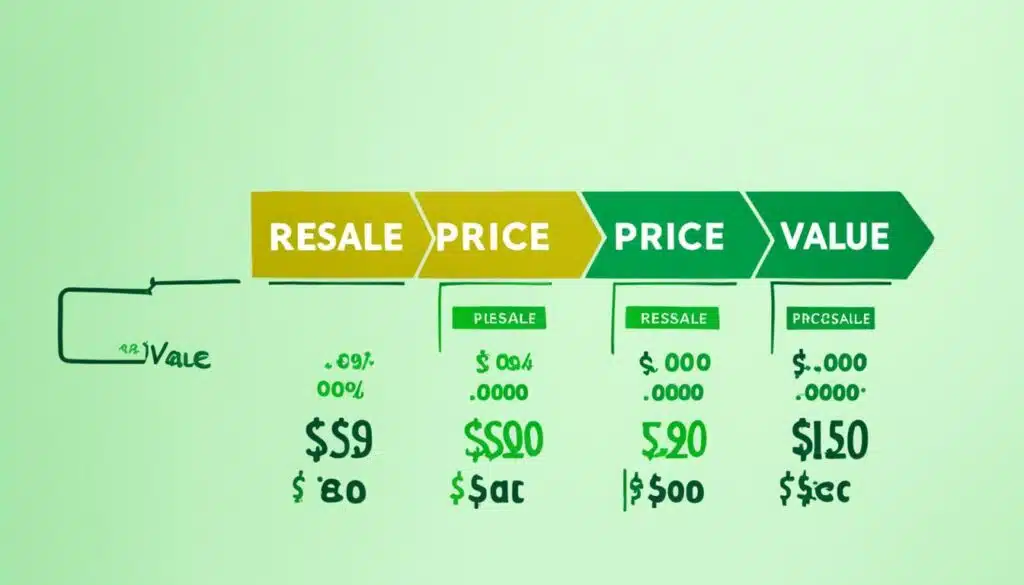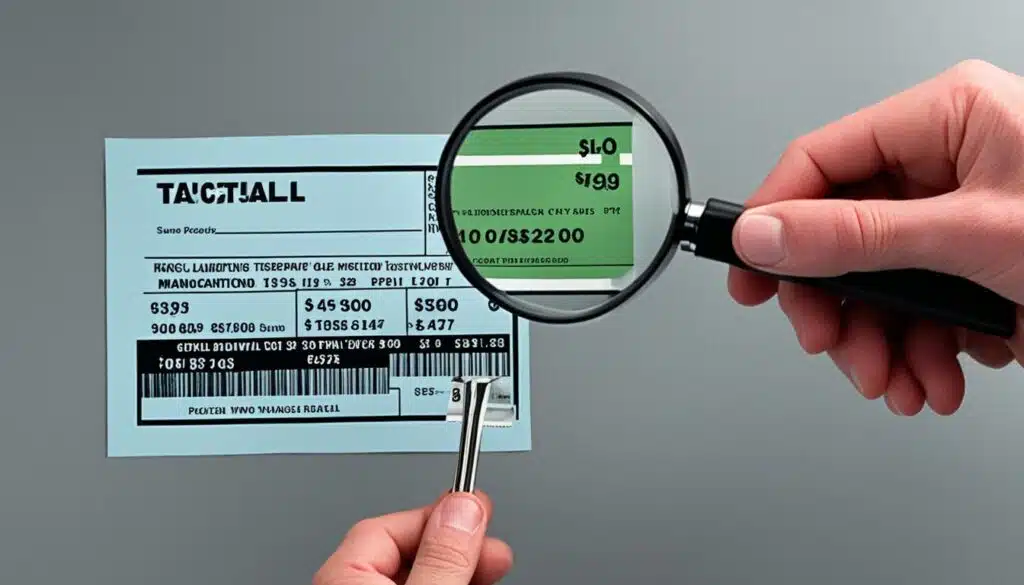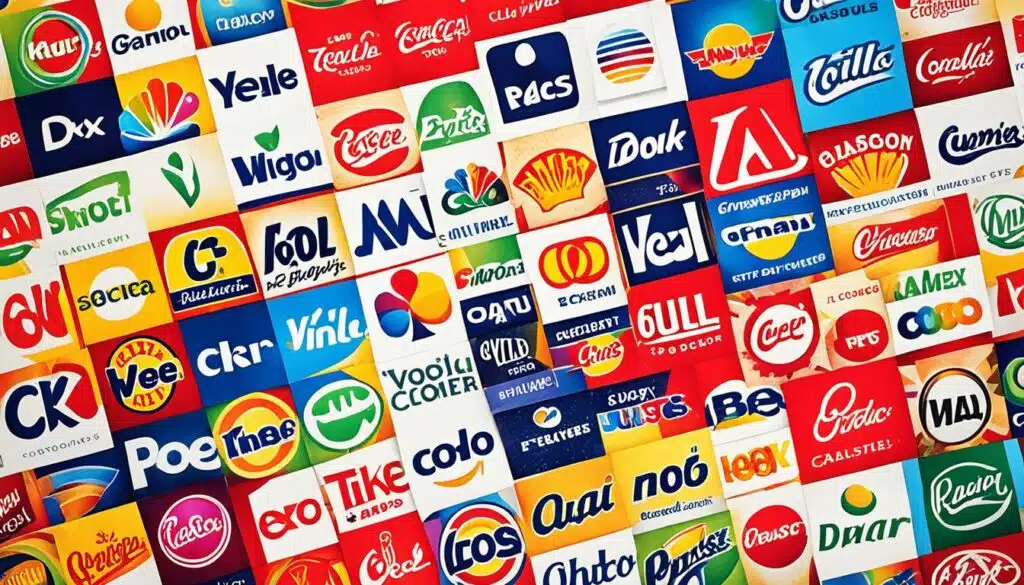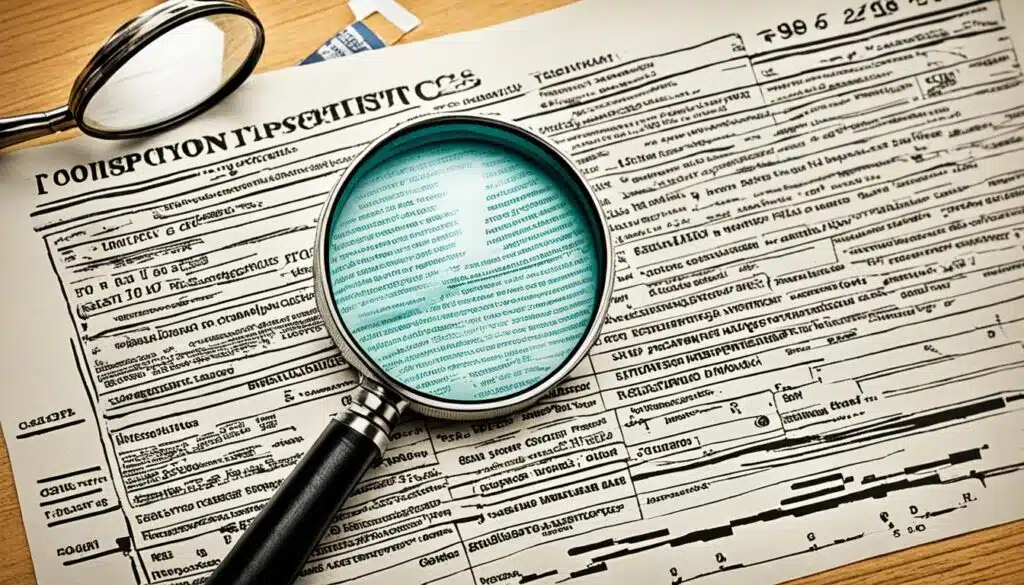Selling used items can be a lucrative way to earn extra cash or even start a home-based business. If you have pre-owned goods lying around, it’s time to turn them into cash. By following these tips, you can maximize your earnings and make the most of your used items. From choosing the right platform to pricing your items accurately, here’s everything you need to know to sell used items and earn a profit easily.
Key Takeaways: Selling Used Items
- Consider selling your used items online on platforms like eBay or Craigslist to reach a wider audience.
- Be strategic in pricing your items by researching their market value and setting a competitive price that attracts buyers.
- Focus on finding bargains when purchasing used items to maximize your potential profit.
- Specialize in a few niches to build expertise and offer better value to your customers.
- Inspect your items thoroughly and provide accurate descriptions to maintain buyer satisfaction.
Buy almost everything used
One of the keys to maximizing profits when selling used items is to consider buying almost everything used in the first place. Household items, in particular, can lose their value quickly once they are no longer new. By embracing the idea of buying used instead of new, you can save money and increase your profit margin when reselling these items. While there may be certain items that you prefer to purchase new, such as mattresses for hygiene reasons, most home furnishings can be bought used without compromising on quality.
When you buy used household items, you are not only saving money but also making a more sustainable choice. By giving these items a second life, you contribute to reducing waste and the overall environmental impact of production. It’s a win-win situation where you can satisfy your needs while also making a positive impact on the planet.
When buying used items, it’s important to prioritize the quality and condition of the products. Inspect them carefully to ensure they meet your standards and will be attractive to potential buyers in the future. Additionally, research the market value for similar items to understand their resale potential and set a competitive price that allows for a profitable transaction.
Pros of Buying Used:
- You can save money: Buying used items is generally more affordable than purchasing brand new ones.
- Wide selection available: The used market offers a vast array of options, allowing you to find unique and vintage treasures.
- Sustainable choice: By buying used, you are reducing the demand for new production, which helps conserve resources and reduce waste.
Cons of Buying Used:
- Limited warranty: Used items may not come with warranties or guarantees, so you need to factor in the potential risk.
- Lower availability of certain items: While there is a wide range of used items available, some specific items may be more challenging to find in good condition.
Keep in mind that buying used household items can be a smart financial decision and an opportunity to make a profit when reselling them. Just make sure to do your research and choose items carefully to ensure their value and desirability in the market.
Don’t base your resale price on the price you paid

When selling used items, it’s important not to base your resale price solely on the amount you initially paid. Instead, you should consider the market value of the item to determine an appropriate price. Setting your price according to market value will attract buyers and maximize your profit potential. Conducting thorough research before listing your items for sale is essential in determining their market value.
By taking into account the market value, you can ensure that you’re setting a fair and competitive price. This may require comparing prices of similar items currently being sold, considering the condition of your item, and analyzing its popularity in the market. Evaluating these factors will help you make an informed decision about the resale price.
Remember, buyers are more likely to be attracted to items with reasonable prices that align with their expectations. By pricing your used items based on market value rather than your original purchase price, you increase the likelihood of selling them quickly and maximizing your profits.
Conducting Market Research
In order to determine the market value of your used items, it’s crucial to conduct thorough research. Here are some steps you can follow:
- Start by searching for similar items currently listed on online selling platforms, such as eBay or Craigslist. Pay attention to the prices these items are being sold for, taking note of any variations based on condition, brand, or other relevant factors.
- Consider visiting local thrift stores or attending yard sales to get an idea of the prices at which similar items are being sold in your area.
- Take advantage of online resources and forums that focus on specific niches or collectibles. These communities can provide valuable insights into market trends and pricing guidelines.
By investing time and effort into this research, you’ll gain a better understanding of the fair market value for your used items. This knowledge will allow you to set a competitive price that attracts buyers while maximizing your profit potential.
Remember, pricing based on market value rather than your original purchase price is key to successful selling. Don’t let sentimental attachment to an item cloud your judgment when setting its resale price.
To further illustrate the importance of pricing based on market value, consider the table below, which compares items priced based on their original purchase price versus those priced according to market value:
| Item | Original Purchase Price | Resale Price based on Market Value |
|---|---|---|
| Designer Handbag | $500 | $300 |
| Smartphone | $800 | $400 |
| Video Game Console | $350 | $200 |
| Fitness Equipment | $1,000 | $600 |
As seen in the table above, pricing items based on their market value can lead to more attractive resale prices and increase the likelihood of selling these items quickly. This approach enables you to optimize your profits while offering buyers a fair deal.
The profit comes at the purchase, not the sale

One of the secrets to making a profit when selling used items is to focus on finding bargains at the time of purchase. This means being willing to hunt for a good deal, whether it’s at yard sales, thrift stores, or online platforms. By knowing the market value of the items you’re interested in, you can determine if you’re getting a great price and anticipate the potential mark-up you can make when reselling the item in the future. The profit comes from buying low and selling high, so put in the effort to find those hidden gems.
Knowing the Market Value
Before embarking on your treasure hunt, it’s essential to research and understand the market value of the items you’re planning to buy. This will enable you to identify good deals and avoid overpaying for used goods. Take your time to thoroughly research similar items and their selling prices. Online platforms, such as eBay or specialized forums, are great resources to gauge the market and prices for specific items. By arming yourself with knowledge, you’ll have a better chance of finding bargains that can lead to a profitable resale.
Source Wisely
When searching for bargains, be open to different sources and locations. Here are a few options to consider:
- Yard Sales: Explore local yard sales in your area, as they often provide opportunities to find quality items at low prices. Bargain with the sellers and don’t be afraid to negotiate.
- Thrift Stores: Thrift stores are a treasure trove for finding inexpensive used items. Regularly visit different thrift stores in your community and keep an eye out for unique or valuable items that can yield a substantial profit.
- Online Platforms: Utilize online platforms such as Craigslist, Facebook Marketplace, or Letgo to find local sellers and potential deals. These platforms offer a wide range of used items, and some sellers may be motivated to sell quickly, resulting in lower prices.
Anticipating Potential Mark-Up
By understanding the market value of the items you’re interested in purchasing, you can anticipate the potential mark-up when reselling them. This requires evaluating factors such as demand, rarity, condition, and any unique features that may add value. Keep in mind that some items may have a higher potential mark-up than others. For example, vintage designer clothing or collectible toys can fetch a significant premium when sold to the right audience. By focusing on items with a high potential mark-up, you can maximize your profits and build a successful resale business.
Example Bargain Hunting Strategy
To illustrate the profit potential that comes from finding bargains, consider the following example:
| Item | Market Value | Purchase Price | Potential Mark-Up |
|---|---|---|---|
| Vintage Vinyl Record | $50 | $10 | $40 |
| Collectible Action Figure | $100 | $20 | $80 |
| Antique Furniture | $500 | $100 | $400 |
As shown in the table, by purchasing items below their market value, you can potentially earn a significant mark-up when selling them. These examples demonstrate the potential profit that can be achieved by finding great deals and capitalizing on the market demand for specific items.
Remember, when it comes to selling used items, the profit is not solely determined by the resale price but by the bargain you secure at the time of purchase. So, sharpen your hunting skills and know the market value to find those hidden treasures that can turn into profitable transactions.
Focus on only a few niches

To be successful in selling used items, it’s important to focus on only a few niches. Attempting to be an expert in every area can be overwhelming and may result in a lack of expertise in any one category. Instead, start by concentrating on areas that align with your interests and where you already possess some knowledge. This could include niches such as tools, electronics, furniture, or kids’ items. By specializing in specific categories, you can build your expertise and provide valuable insights and advice to your customers.
As you gain experience and market knowledge, you can gradually expand into other categories, but it’s crucial to maintain a strong foundation in your primary niches. By focusing on specific areas, you can effectively target your audience and tailor your selling strategies to meet their needs. This includes understanding the demand, pricing trends, and potential buyers within your chosen niches. By becoming an expert in these specific categories, you not only increase your chances of success but also build a loyal customer base.
Having in-depth knowledge of your chosen niches allows you to identify valuable items, set competitive prices, and present yourself as a trusted source in your market. It also enables you to effectively market and promote your listings, showcasing your expertise to potential buyers. By focusing on specific niches, you can differentiate yourself from your competitors and provide a unique selling proposition that sets you apart.
Ultimately, having market knowledge and expertise in specific categories enhances your credibility, builds trust with buyers, and increases your chances of selling your used items at a higher profit. So, take the time to research, understand, and educate yourself about the niches you choose to focus on. This investment in knowledge will pay off in the long run as you continue to grow your selling business.
Know price ranges for your niches

In order to sell your items at a profit, it’s important to know the price ranges for your niches. This requires conducting market research and understanding what prices are considered a steal and what prices will sell quickly to interested buyers. By knowing the price range, you can set a competitive price that is fair to both you and the buyer. This may require experimenting with different price points and adjusting your prices based on market demand. Ultimately, the goal is to find the sweet spot that will yield the highest profit for each item you sell.
Know brands

In many niches, knowing brands is essential when selling used items. The reputation and value of a brand can significantly impact the selling price and buyer confidence. For example, buyers may be more willing to purchase a used item from a well-known brand as they associate it with quality and reliability. By understanding the value of different brands within your niches, you can source items that have a higher resale value and maximize your profits. When shopping for used items, keep an eye out for name brands that hold their value well.
Brands that Hold Their Value
| Brand | Reputation | Value |
|---|---|---|
| Nike | Well-known and respected | High resale value |
| Apple | Renowned for quality | Retains value over time |
| Levi’s | Iconic denim brand | Desirable in the used market |
| Hermes | Luxury and exclusivity | Premium resale prices |
Knowing these brands and their reputation within your niches is crucial for successful selling. Buyers are willing to pay more for items from trusted brands, and this increases your chances of selling at a profitable price. When describing your items, be sure to highlight the brand and emphasize its value to attract potential buyers. By leveraging the reputation of well-known brands, you can instill buyer confidence and maximize your earning potential. Remember, a strong brand can add significant value to your used items.
Inspect items carefully

When selling used items, it’s crucial to inspect them carefully before listing them for sale. Buyers have high expectations for full disclosure about the condition of the items they purchase. Failing to disclose any flaws can result in dissatisfaction and negative reviews, impacting your reputation as a seller. To ensure buyer satisfaction and maintain your integrity, follow these steps:
Thoroughly examine each item
Take the time to thoroughly inspect each item you plan to sell. Pay attention to any visible defects, signs of wear and tear, or functional issues. It’s essential to provide an accurate description of the item’s condition in your listing, including both the positive aspects and any deficiencies. Be sure to photograph the item from multiple angles to provide a comprehensive visual representation.
Describe the item accurately
When describing the item, use clear and concise language to accurately convey its condition. Highlight any imperfections, such as scratches, dents, or missing parts. Avoid exaggerating the item’s condition to avoid potential disputes with buyers. Remember, full disclosure is key to building buyer trust and satisfaction.
Provide additional details
Go beyond the basics when discussing the item’s condition. Provide additional details that can help buyers make an informed decision. For example, if selling clothing, mention the size, fabric type, and any unique features. If selling electronics, include information about the device’s specifications, functionality, and any accessories included. The more information you provide, the more confident buyers will feel about their purchase.
Be transparent about item value
Alongside the item’s condition, it’s essential to include information about its value. If the item is a collectible, vintage, or from a popular brand, mention its potential resale or market value. This transparency can attract buyers who are specifically seeking valuable items and are willing to pay a premium for them.
Build buyer satisfaction
By inspecting items carefully and providing full disclosure, you can establish a reputation for honesty and integrity. Satisfied buyers are more likely to leave positive reviews, recommend you to others, and become repeat customers. This can significantly increase your chances of success in the long run.
Remember, buyer satisfaction is paramount in the world of selling used items. By investing time and effort into inspecting items carefully and ensuring full disclosure, you can create a positive buying experience and maximize the value of your items.
| Benefits of Inspecting Items Carefully | Effective Practices |
|---|---|
| Ensured buyer satisfaction | Thoroughly examining each item |
| Prevented negative reviews | Describing the item accurately |
| Increased seller integrity | Providing additional details |
| Maximized item value | Being transparent about item value |
| Boosted seller reputation | Building buyer satisfaction |
When navigating through online marketplaces like Amazon to find the best platform for selling your items, options such as Facebook Marketplace or Craigslist also emerge as viable contenders. These platforms not only offer a wide reach but also provide convenient payment processing solutions for both sellers and buyers. Whether you’re selling an item through Amazon or exploring alternatives like Facebook Marketplace or Craigslist, ensuring seamless transactions where you’ll pay or receive payments securely becomes paramount in the digital marketplace landscape.
Also Read : Top Trending Finance Apps For Smart Money Management
Conclusion
Selling used items can be a profitable venture, allowing you to earn extra income or even start a home-based business. By following the tips provided in this article, you can maximize your profits and make the most of your pre-owned goods.
One important aspect of successful selling is to buy items used whenever possible. This not only saves you money but also increases your profit margin when it comes time to resell. By being willing to explore online platforms, thrift stores, and yard sales, you can find hidden gems and great deals that will boost your earnings.
Another key strategy for successful selling is to accurately price your items based on their market value, rather than the price you paid. By doing your research and understanding the price range for your niche, you can set competitive prices that attract buyers while still maximizing your profits.
Remember to provide accurate item descriptions, excellent customer service, and maintain a competitive pricing strategy. Whether you choose to sell on online platforms like eBay or engage in local sales, these practices will help you build a good reputation and increase your chances of repeat buyers. So, go ahead and explore the world of selling used items to earn extra income and make the most of your pre-owned goods!
FAQs
Q: How can I find the best online marketplace to sell my used items?
A: To find the best online marketplace, consider platforms like eBay, Amazon, Etsy, Poshmark, OfferUp, and others based on your item type, target audience, and selling preferences.
Q: What are the top online selling sites I should consider in 2024?
A: In 2024, popular online selling sites include eBay, Amazon, Etsy, Poshmark, Ruby Lane, Swappa, and other platforms that offer a wide range of categories for selling used items.
Q: How do I list an item for sale on an online marketplace?
A: To list an item for sale, create a detailed description, set a competitive sale price, upload clear photos, and follow the platform’s guidelines for listing products.
Q: Can I sell vintage items and collectibles online?
A: Yes, you can sell vintage items and collectibles on online marketplaces like Etsy, Ruby Lane, eBay, and specialized platforms that cater to unique and rare items.
Q: What fees are involved in selling items online?
A: When selling items online, you may encounter fees such as transaction fees, commission fees, shipping fees, and final value fees based on the platform’s policies and the type of item you are selling.
Q: Are there specific online sites for selling certain types of items like fashion items or home decor?
A: Yes, there are online marketplaces dedicated to specific categories like fashion items (Poshmark, ThredUp) and home decor (Etsy, Chairish) where you can list and sell items tailored to those niches.
Q: How can I earn a profit by selling used items online?
A: To earn a profit, research market trends, offer competitive prices, provide excellent customer service, promote your listings, and maintain quality products to attract buyers and increase sales.





